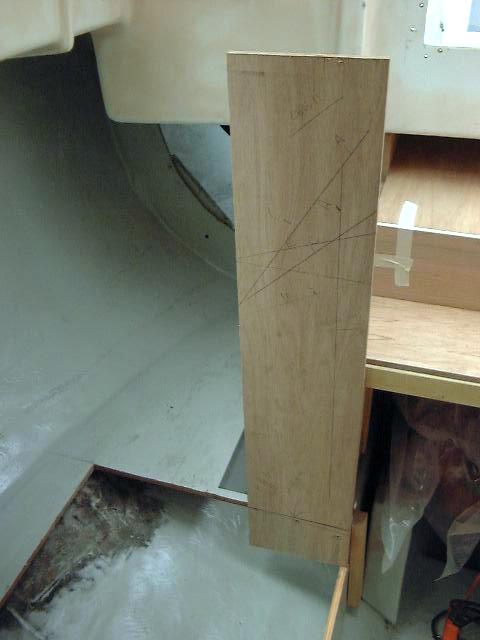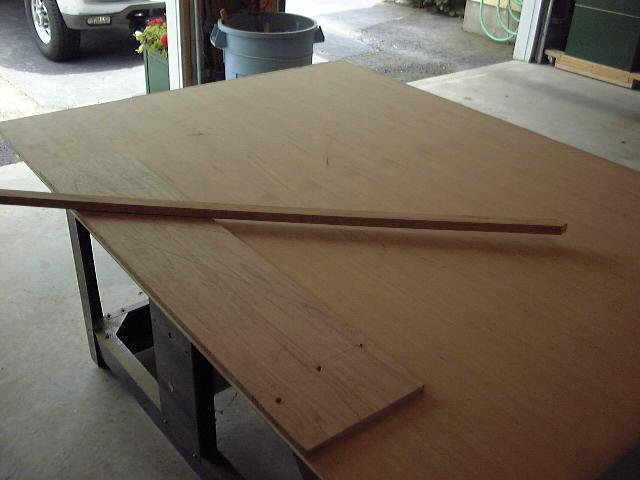|
 One
effective way to make a pattern of the curvature of the hull for cutting a new
bulkhead is to use a tick strip. This consists of a narrow
(3/4" or 1") strip of wood, cut to a roughly appropriate length, and a
piece of plywood, cardboard or even paper. One
effective way to make a pattern of the curvature of the hull for cutting a new
bulkhead is to use a tick strip. This consists of a narrow
(3/4" or 1") strip of wood, cut to a roughly appropriate length, and a
piece of plywood, cardboard or even paper.
First, cut a point on the end of the narrow strip of
wood. This will act as a pointer, essentially.
Next, attach (as necessary) the plywood/cardboard in a
location marked for easy reference. In the photo at left, the plywood is
screwed in place with the right vertical edge representing the inboard end of
the new bulkhead, and the bottom representing the bottom extent.
Now, lay the tick strip over the plywood, and place the
pointer against the hull in any of a number of positions. Draw a line on
the plywood using the tick strip as a guide, and make a mark on the plywood and tick strip
at any random location along the line. Label the mark "A" in
both places. Continue this procedure until you have as many different
marks as needed to give you an appropriate guide for layout later. You may
add additional marks ("B", "C", etc.) as necessary in order
to transfer the dimensions. You will end up with a board that looks
somewhat like the one above, with several different lines drawn at all angles,
with little lettered tick marks.
|
|
 Now,
remove the board and place it over the material you wish to cut. Align the
edges or whatever reference marks you have in the appropriate position.
Clamp or secure it in place if necessary. Now,
remove the board and place it over the material you wish to cut. Align the
edges or whatever reference marks you have in the appropriate position.
Clamp or secure it in place if necessary.
Next, take your tick strip and reverse the above
process: lay the strip over the predetermined marks and align the lettered
ticks as needed, and transfer the mark to the end of the strip. you should
end up with enough marks on your material to lay a spline over and draw in the
curve or other shape.
|